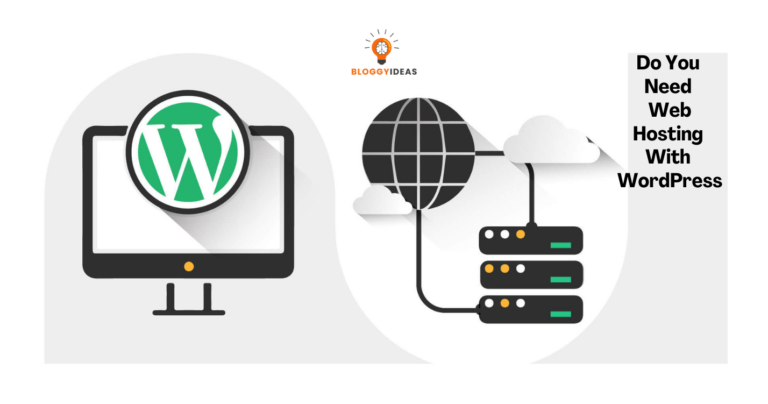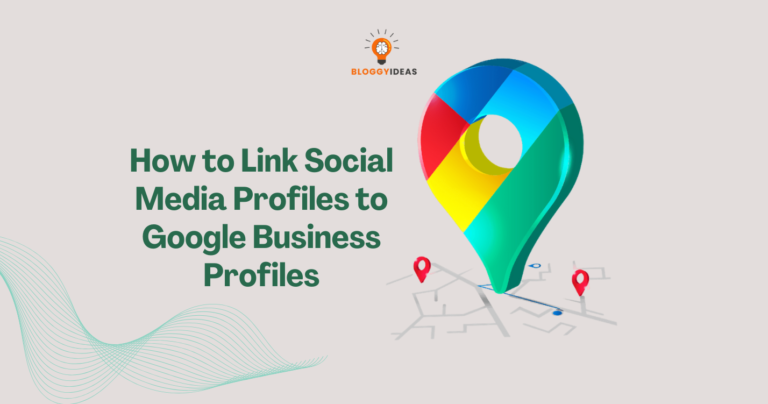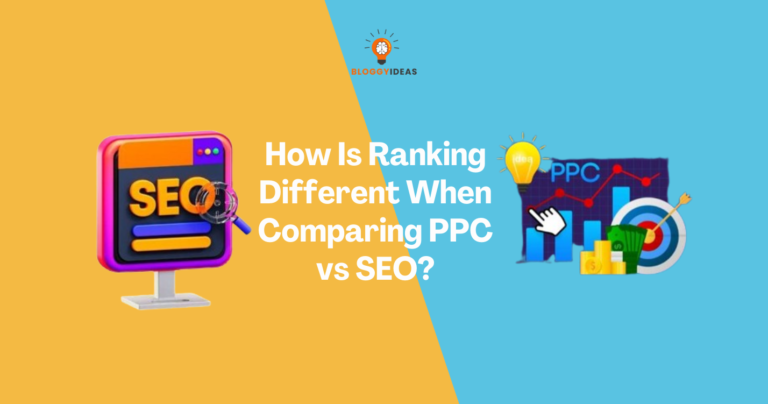Which Targeting Option Is Best for Achieving Brand Awareness?
“Quick Overview” Brand awareness is a critical factor in driving growth and gaining a competitive advantage in today’s business landscape. To achieve effective brand awareness, businesses must carefully choose the best targeting option. This blog explores four key targeting options: demographic targeting, psychographic targeting, behavioral targeting, and contextual targeting.
By examining their advantages and providing real-world examples, we aim to help businesses make informed decisions to maximize the impact of their brand awareness initiatives. Let’s explore the world of targeting options and find the optimal path to successful brand awareness campaigns.
Targeting Option 1: Demographic Targeting
Explanation of Demographic Targeting
Demographic targeting involves segmenting and reaching audiences based on specific demographic characteristics such as age, gender, income, education level, occupation, and geographic location. This approach allows businesses to tailor their brand messages and marketing efforts to resonate with specific demographic groups.
Demographic targeting enables businesses to gain insights into the preferences, behaviors, and needs of different demographic segments, allowing for more precise and effective brand awareness campaigns.
Benefits of Demographic Targeting for Brand Awareness
- Relevant and Personalized Messaging: Demographic targeting enables businesses to deliver tailored messages that align with the unique characteristics of different demographic segments. This personalized approach increases the relevance and impact of brand communication, fostering stronger connections with the target audience.
- Efficient Resource Allocation: By focusing marketing efforts on specific demographic segments, businesses can optimize their resources and budget. Rather than deploying generic campaigns to a broad audience, demographic targeting allows for a more efficient allocation of resources, resulting in higher ROI and a more cost-effective approach to brand awareness.
- Enhanced Conversion Rates: By reaching out to audiences that are more likely to be interested in a particular brand or product, demographic targeting can significantly improve conversion rates. By tailoring messaging and offers to specific demographics, businesses can increase the likelihood of driving desired actions, such as website visits, sign-ups, or purchases.
Successful Brand Awareness Campaigns Using Demographic Targeting
- Nike’s “Just Do It” Campaign: Nike has successfully used demographic targeting to promote its athletic apparel and footwear. By targeting a younger demographic (18-35 years), Nike has created impactful campaigns featuring influential athletes and celebrities that resonate with the target audience’s aspirations and values.
- Pampers’ “Pamper the Mom” Campaign: Pampers, a leading baby care brand, has effectively employed demographic targeting by focusing on new mothers. Through heartwarming and relatable advertisements highlighting the joys and challenges of motherhood, Pampers has built a strong brand presence among its target demographic.
- Coca-Cola’s “Share a Coke” Campaign: Coca-Cola implemented demographic targeting by personalizing their product labels with popular names. This campaign resonated with younger consumers (teens and young adults) who sought personalized experiences and shared them on social media, thereby amplifying brand awareness.
Targeting Option 2: Psychographic Targeting
Explanation of Psychographic Targeting
Psychographic targeting involves segmenting the audience based on their attitudes, values, beliefs, interests, lifestyles, and personalities. Unlike demographic targeting, which focuses on objective characteristics such as age or gender, psychographic targeting delves deeper into understanding the psychological and behavioral aspects of individuals. It aims to connect with consumers on a more personal and emotional level by aligning the brand message with their unique motivations, desires, and preferences.
Psychographic targeting relies on various data sources such as surveys, social media behavior, online browsing patterns, and lifestyle indicators to build comprehensive profiles of target audience segments. By understanding the underlying motivations and aspirations of consumers, businesses can create highly relevant and resonant brand messaging and experiences.
Benefits of Psychographic Targeting for Brand Awareness
- Enhanced Relevance and Personalization: Psychographic targeting allows businesses to tailor their brand messages to align with the specific interests, values, and lifestyle choices of their target audience. By speaking directly to their unique motivations, brands can create a deeper sense of connection and resonance, increasing the likelihood of brand recall and positive associations.
- Improved Campaign Efficiency: By targeting specific psychographic segments, businesses can optimize their marketing efforts and resources. Instead of adopting a one-size-fits-all approach, psychographic targeting helps streamline campaigns and allocate resources more effectively, ensuring that marketing budgets are spent on reaching the most relevant and receptive audience.
- Increased Engagement and Brand Loyalty: When brands successfully tap into the emotional and psychological drivers of their target audience, it fosters a sense of affinity and loyalty. By consistently delivering messages that align with consumers’ values and aspirations, brands can establish a long-term connection and encourage repeat purchases and advocacy.
Successful Brand Awareness Campaigns
- Nike: Nike’s “Just Do It” campaign resonates with psychographic segments that value self-expression, personal achievement, and a sense of empowerment. By featuring real athletes and stories of determination and resilience, Nike connects with individuals who identify with the brand’s core values and motivates them to embrace an active lifestyle.
- Apple: Apple’s marketing campaigns often target psychographic segments characterized by a preference for innovation, creativity, and a desire for cutting-edge technology. By showcasing sleek design, simplicity, and seamless integration, Apple appeals to individuals who value aesthetics, user experience, and being part of a forward-thinking community.
- Airbnb: Through its “Belong Anywhere” campaign, Airbnb taps into the psychographic segments seeking unique and authentic travel experiences. By highlighting diverse accommodations and emphasizing the idea of feeling at home while traveling, Airbnb attracts individuals who prioritize personalization, adventure, and cultural immersion.
Targeting Option 3: Behavioral Targeting
Behavioral targeting is a targeting option that focuses on understanding and analyzing consumer behaviors, actions, and interests to deliver tailored marketing messages. It involves collecting and analyzing data related to consumers’ online activities, such as websites visited, search queries, content consumed, and purchase history. By leveraging this information, businesses can create highly personalized and relevant brand awareness campaigns.
Behavioral targeting relies on tracking technologies like cookies and pixel tags to gather data and create user profiles. These profiles capture insights into consumers’ preferences, habits, and intent, allowing marketers to tailor their messaging to specific behavioral segments.
Benefits of Behavioral Targeting for Brand Awareness
- Enhanced Relevancy: Behavioral targeting enables businesses to deliver highly relevant and personalized messages to their target audience. By understanding consumers’ interests and behaviors, brands can align their content and advertising with their specific preferences, increasing the likelihood of capturing attention and generating brand awareness.
- Increased Engagement: Tailoring brand messages based on behavioral data leads to more engaging experiences for consumers. When ads and content resonate with their interests and past behaviors, consumers are more likely to engage, click, and share, resulting in increased brand exposure and awareness.
- Efficient Resource Allocation: Behavioral targeting allows businesses to allocate their marketing resources more efficiently. Instead of broad-based campaigns, resources can be focused on reaching consumers who have demonstrated relevant behaviors or are more likely to respond positively. This targeted approach optimizes marketing budgets and maximizes the impact of brand awareness efforts.
- Better Campaign Performance Tracking: Behavioral targeting provides robust data and insights that allow marketers to measure and track campaign performance more accurately. By monitoring key behavioral metrics, such as click-through rates, conversions, and engagement, businesses can evaluate the effectiveness of their brand awareness campaigns and make data-driven optimizations.
Successful Brand Awareness Campaigns Using Behavioral Targeting
- Spotify: Spotify utilizes behavioral targeting by analyzing users’ listening habits and preferences. They create personalized playlists, recommend similar artists, and suggest tailored music suggestions based on users’ listening history. This approach not only enhances the user experience but also increases brand awareness by introducing users to new artists and genres.
- Amazon: Amazon employs behavioral targeting by analyzing users’ browsing and purchase history to recommend personalized product suggestions. By showcasing relevant products based on customers’ past behaviors, Amazon increases brand awareness and encourages repeat purchases.
- Netflix: Netflix leverages behavioral targeting to provide personalized content recommendations to its users. By analyzing users’ viewing habits, ratings, and genre preferences, Netflix suggests shows and movies that align with their interests. This personalized approach enhances brand awareness by delivering content that appeals to individual tastes.
Targeting Option 4: Contextual Targeting
Contextual targeting is a marketing strategy that involves delivering advertisements to audiences based on the context of the content they are consuming. Instead of relying solely on demographic or user-specific data, contextual targeting considers the relevance of the content being viewed to determine which ads to display. It analyzes keywords, topics, themes, and other contextual cues to ensure that ads are shown in an appropriate and related context.
Contextual targeting can be implemented through various channels, including websites, mobile apps, and social media platforms. Advanced technologies, such as natural language processing and machine learning, help to accurately match ads with relevant content by understanding the context and meaning of the content being consumed.
Benefits of Contextual Targeting for Brand Awareness
- Relevance and Alignment: Contextual targeting ensures that ads are displayed in a relevant context, increasing the likelihood of capturing the audience’s attention. By aligning advertisements with content that is related to the brand, businesses can establish a strong association between their offerings and the consumers’ interests or needs.
- Brand Safety: Contextual targeting provides a layer of brand safety by ensuring that ads are not displayed alongside inappropriate or undesirable content. This helps businesses maintain their brand reputation and prevent any potential negative associations.
- Increased Engagement: When ads are presented in a contextually relevant environment, users are more likely to engage with them. This can lead to higher click-through rates, increased brand recall, and a better overall user experience.
- Cost-Effectiveness: Contextual targeting can be a cost-effective approach, as it focuses on reaching audiences who are actively consuming content related to the brand’s offerings. This targeted approach minimizes ad wastage and maximizes the efficiency of advertising spend.
Successful Brand Awareness Campaigns Using Contextual Targeting
- An outdoor apparel brand used contextual targeting to display ads on hiking and adventure-themed websites and blogs. By aligning their ads with relevant content, they successfully reached an audience that was actively interested in outdoor activities, leading to increased brand awareness and website traffic.
- A cosmetic company leveraged contextual targeting on social media platforms, specifically targeting users who were engaging with beauty tutorials and makeup-related content. By presenting their ads within the context of beauty and makeup discussions, they effectively captured the attention of their target audience and generated brand awareness among makeup enthusiasts.
- An automobile manufacturer utilized contextual targeting to display ads on automotive review websites and forums. By reaching consumers who were actively researching and discussing cars, they positioned their brand in a context that resonated with potential car buyers, resulting in improved brand awareness and consideration.
Comparison and Evaluation of Targeting Options
When deciding on a targeting option for brand awareness campaigns, several factors should be taken into account. These key considerations include:
- Audience Relevance: Assess the relevance of the targeting option to your target audience. Does it align with their characteristics, behaviors, or interests?
- Campaign Goals: Understand your brand awareness objectives and determine how each targeting option can contribute to achieving those goals.
- Data Availability: Consider the availability and quality of data required for the targeting option. Do you have access to accurate and up-to-date data that can effectively target your desired audience?
- Budget: Evaluate the cost associated with each targeting option and determine whether it aligns with your budget constraints.
- Scalability: Assess the scalability of the targeting option. Can it accommodate your campaign’s growth and expansion plans?
Comparison of the Effectiveness and Suitability of Each Targeting Option
- Demographic Targeting:
- Effectiveness: Demographic targeting allows you to reach audiences based on specific demographic attributes such as age, gender, location, and income. It provides a broad understanding of your target audience.
- Suitability: Demographic targeting is useful when your brand caters to a specific age group, gender, or geographical area. It is also valuable for campaigns focused on products or services that align with certain income levels.
- Psychographic Targeting:
- Effectiveness: Psychographic targeting focuses on the psychological and behavioral aspects of your audience. It helps to identify their values, interests, lifestyle choices, and motivations.
- Suitability: Psychographic targeting is beneficial when your brand aims to connect with consumers on a deeper emotional or psychological level. It allows you to create tailored messages and resonate with specific lifestyle preferences or belief systems.
- Behavioral Targeting:
- Effectiveness: Behavioral targeting focuses on user actions and past behaviors, such as online browsing history, purchase patterns, and engagement with digital content. It helps to identify and target audiences based on their demonstrated behaviors.
- Suitability: Behavioral targeting is effective when you want to reach consumers who have already shown interest or intent in your product or service. It is particularly valuable for remarketing campaigns or targeting users in specific stages of the buyer’s journey.
- Contextual Targeting:
- Effectiveness: Contextual targeting involves placing ads in relevant digital contexts, such as specific websites, articles, or content categories. It ensures your brand message appears in environments related to your target audience’s interests.
- Suitability: Contextual targeting is useful when your brand wants to associate itself with specific topics, industries, or online communities. It allows you to leverage the context of the content to enhance brand relevance and engagement.
Factors that Influence the Choice of Targeting Option
- Brand Identity: Consider how each targeting option aligns with your brand’s identity, values, and messaging. Choose the option that best supports your brand positioning and resonates with your target audience.
- Target Audience Characteristics: Understand the characteristics, preferences, and behaviors of your target audience. This knowledge will help you determine which targeting option will effectively reach and engage them.
- Campaign Reach and Scale: Evaluate the reach and scalability of each targeting option. Some options may have wider reach but lack the precision of more focused targeting methods. Consider the size and growth potential of your target audience when making your decision.
- Campaign Performance Metrics: Define the metrics that are most important to your brand awareness campaign. Whether it’s reach, engagement, conversions, or brand sentiment, choose the targeting option that aligns with your desired performance metrics.
Conclusion
Choosing the right targeting option is crucial for effective brand awareness campaigns. Factors such as audience relevance, campaign goals, data availability, budget, and scalability should be considered when making this decision.
Demographic targeting provides a broad understanding of the target audience, while psychographic targeting focuses on their psychological and behavioral aspects. Behavioral targeting considers user actions, and contextual targeting leverages relevant digital contexts.
To make the best choice, align the targeting option with your brand’s identity, understand your target audience, evaluate reach and scale, and define desired performance metrics.
By selecting the most suitable targeting option and continuously refining your approach, you can optimize brand awareness, engage your audience, and drive growth. Remember to adapt to evolving preferences and behaviors to maintain a strong brand presence.
Now, armed with insights into targeting options, unleash the power of brand awareness to captivate your audience, foster loyalty, and unlock new growth opportunities.
Related Resources:







